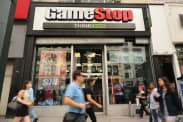The hospitality industry has always felt like home to Juan Vargas. For 20 years, he’s worked in hotels in Miami and his native New York, doing everything from running front desk operations to training staff, handling payroll and managing special events.
Most recently Vargas was the guest services manager at WestHouse Hotel, a luxury hotel near Columbus Circle in Manhattan, where he worked for five years. As the first wave of COVID-19 battered the city, the hotel closed on March 21, and he and his colleagues were put on a two-month, paid furlough. In May, he officially became one of an estimated million or more New Yorkers who have lost their livelihoods amid the pandemic.
After months of filing for unemployment benefits and applying for jobs in his field with no success, Vargas said he is reluctantly beginning to broaden his job search and trying to stay optimistic.
“It’s a daily struggle, but someday, something’s gonna give,” he said. “I believe in that.”
At 53, the Bronx resident may yet join several of his former colleagues — and untold numbers of New Yorkers—in transitioning away from a career he loves that happens to be tied to an industry that has been devastated by pandemic-induced shutdowns and the economic recession.
More CityWatch: ‘After the year we’ve just had, aren’t we worth another $1 an hour?’
He is not alone in considering a new path. As the city’s unemployment rate skyrocketed in March — peaking around 17.9% in early summer — agencies and nonprofits that exist to help unemployed New Yorkers find work have increasingly turned their focus to retraining or repositioning job-seekers like Vargas who have been sitting on the sidelines for months.
The city lost some 562,700 private sector and government jobs between November 2019 and November 2020, with the majority of losses in the hospitality and leisure industries, according to New York State Department of Labor data released in late December. The second most-impacted industries were trade, transportation and utilities, followed by educational and health services.
Meager job gains in the latter half of 2020 helped the unemployment rate creep back down from its summer high, but it’s still far from its pre-pandemic 4%, the city’s Independent Budget Office said in a report published earlier this month. The city’s unemployment rate hovered at 12% as of November, according to the Department of Labor.
Black and Hispanic New Yorkers have endured more widespread job losses during the pandemic than other racial groups, reflecting similar disparities nationwide. An analysis published by the city Department of Consumer and Worker Protection in December found that New York metro area residents who are Hispanic reported experiencing income loss since mid-March with the greatest frequency (68%), followed by Black residents (67%), Asian residents (48%) and white residents (45%).
For the better part of a year, The TemPositions Group of Companies, a regional staffing firm based in Manhattan, has been reassessing the rapidly changing needs of city agencies and other local employers who’ve required workers in new roles to respond to the concurring health and economic crises.
“We want to be able to continuously pivot and keep finding new opportunities [for workers],” James A. Essey, president and CEO, said. “What we have to do as an industry … is work very hard at trying to be a few months ahead to figure out where the next need is going to be and keep preparing tools to be able to rotate [workers] from one opportunity to another.”
Between COVID-19 testing, contact tracing and now vaccination sites, thousands of jobs — albeit temporary jobs — have been created in the New York City metro area, Essey estimated. His firm has thus far dispatched unemployed school nurses to the Javits Center, where a field hospital was set up last spring as New York City became the early epicenter of the U.S. outbreak. Former airline attendants and hotel front-desk workers were redeployed as greeters and registration staffers at testing sites, while out-of-work restaurant staff delivered meals to homebound seniors. Currently, TemPositions is part of a statewide consortium of agencies that aim to deploy some 3,000 workers to staff mostly nonclinical positions at vaccine sites in the coming months, he said.
Don’t miss: What to know about getting the COVID-19 vaccine in New York City
In a stark contrast to pre-pandemic life, Essey said his firm matched roughly 3,000 candidates per week with jobs in a variety of industries throughout the New York tri-state area, northern California and southern Florida. That number has plummeted since March, with an especially somber outlook for New York.
“Our business is down about 50% in terms of the number of people that we’re putting out to work,” he said.
Those figures suggest that getting most New Yorkers closer to pre-pandemic rates of employment will require a longer-term recovery effort. The January report from the Independent Budget Office had similar findings.
Fewer opportunities in key industries like the performing arts, administrative services and the service sector — indoor dining was halted again citywide last month — means each opening gets flooded with applicants. As the winter drags on, many New Yorkers are sitting at home, staring down the one-year anniversary of their abrupt, involuntary exit from the workforce.
Career-wise, “so many people are just lost right now,” and are struggling to cope with the economic uncertainty of the times, said Melissa Norden, executive director of a nonprofit that supports disadvantaged women in New York City as they enter the workforce.
Also see: When can younger, healthy people get vaccinated?
The organization, Bottomless Closet, reported that 68% of its clients — an overwhelming majority of them women of color in their prime working years (under 30) with children at home — were laid off as the virus shuttered offices, schools and stores last year, Norden said.
Most of the clients who’ve since managed to find work are in “essential” roles like grocery store staff, certified nursing assistants, security guards and Amazon
AMZN,
In response to their clients’ needs, Bottomless Closet staff retooled their in-person career coaching services to help more than 2,000 women “upskill” at home with one-on-one video calls and online group workshops on topics like how to prepare for a Zoom
ZM,
Lydia Dalton, 58, who lost her job as an office manager at New York & Atlantic Railway in March, has tapped into those resources to update her resume and take a professional development course on digital literacy as she researches a career transition.
Because of her health concerns amid the ongoing spread of COVID-19, the Queens resident plans to shift permanently away from the on-site, customer-facing roles she’s enjoyed in the past, including at Avis Budget Group,
CAR,
“Having the background I have, I’m versatile and flexible,” Dalton said. “And office management — you can do it anywhere, it’s just a matter of getting acclimated with that industry that you’re going into.”






